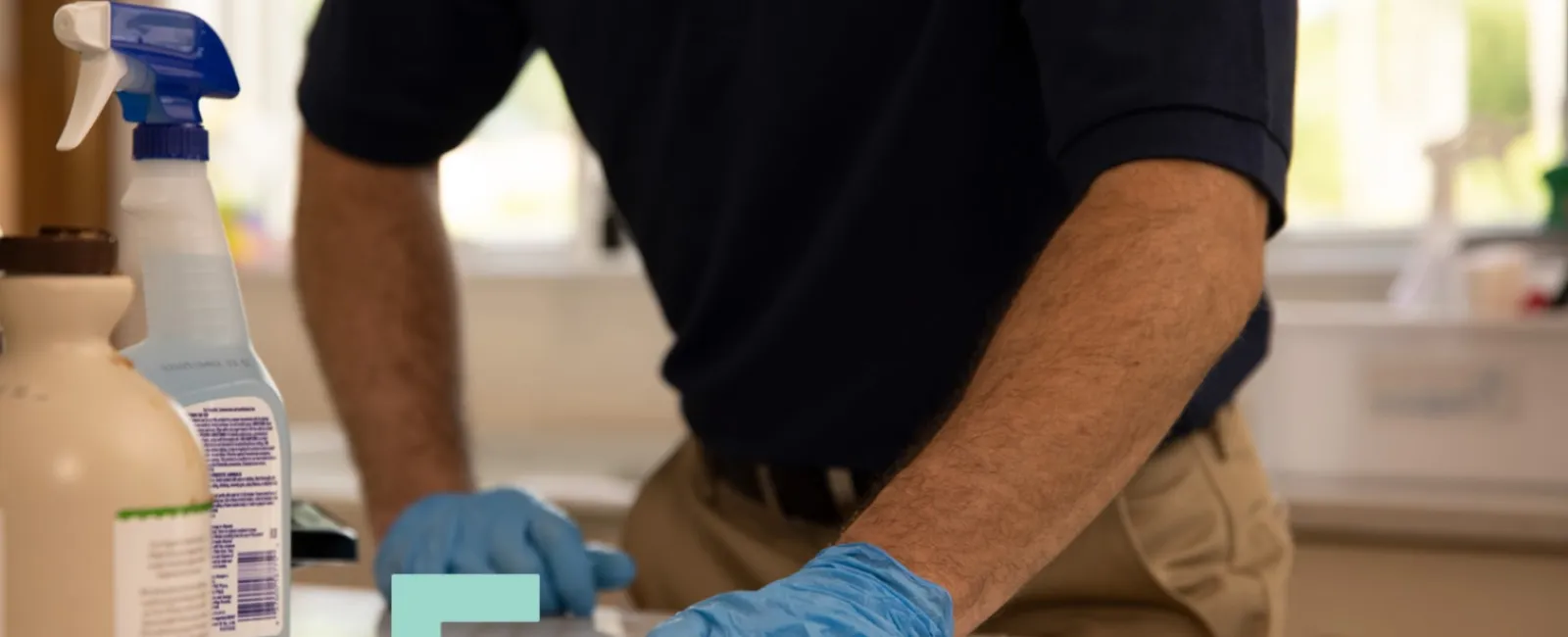
There are few tasks less appealing than cleaning toilets! These PRO tips and tricks will help you to get the job done fast and effectively with the least amount of Yuck! factor and the lowest risk of damage or harm to the environment:
Myth #1 All toilet brushes are the same; any one will do the trick.
FALSE Just because you can technically clean your body with paper towels instead of a wash cloth, doesn’t mean it works well. The same is true here. There are several styles of toilet brushes and holders, each with legitimate pros and cons. Classic Johnny Mops — those soft plastic fluffballs on a stick — are cheap and spread product well, but they don’t scrub at all, so you have to use more aggressive cleaners to get good results. Bristle-style brushes scrub well, but, if they are cheaply made, their handles can snap or bend with repeated use. Both styles can be difficult to store sanitarily. Options with disposable heads scrub well and eliminate storage issues but are terrible for the environment. They also tend to have short handles, which can be bad for your back. Simply put, there is no perfect toilet bowl brush, but we have found with our testing at MaidPro that it is best to invest in a good-quality bristle brush with a sturdy, long handle and an enclosed holder with plenty of ventilation to allow the brush to dry quickly.
Myth #2 You need a special toilet-bowl cleaning chemical.
FALSE While toilet-bowl cleaners do offer some convenient features, such as bright colors and a thick consistency that helps you see and make sure you have applied the product thoroughly, they are notoriously more aggressive than they need to be to get the job done, potentially damaging floors, pipes, and aquatic life out in the environment. Applied properly, high-quality bathroom sprays or abrasive powders will disinfect and remove deposits from inside your toilet bowl. The key is to lower the water level in the toilet by pumping the flusher handle a few times, then distributing the cleaner generously under the rim and along the water line, smearing product with your brush as needed for full coverage. Then, you wait. Cleaning PROs know to apply cleaner to the inside of the toilet the moment they start cleaning a bathroom, so it has maximum soak time while they clean the rest of the room. With a little practice, you can apply a regular bathroom cleaner as thoroughly as you would any bowl-specific product; it will save you money and be less damaging to your home and the environment. If you have fallen a bit behind on your cleaning game and tough deposits have formed in the bowl, you can always crack out a bowl cleaner as a shock treatment.
Myth #3 Bleach is all you need to remove toilet stains.
FALSE While bleach has many excellent properties for bathroom cleaning, such as killing germs and whitening soils, it actually is not the ideal choice for many toilets. Hard water common throughout much of the U.S. makes toilet maintenance a constant struggle as iron, calcium, and other minerals in the water deposit along the water line, turning red, blue, brown, or grey and making a rough, unsightly surface to which the soils you want to flush away can cling (eww). Bleach, which is an oxidizer, causes iron to rust even more, helping to lock it in place rather than cleaning it away. Acid, by contrast, dissolves mineral deposits, allowing them to be scrubbed and rinsed away. To address tough deposits in your toilet bowl, select a mild to moderate acidic cleaner, as more aggressive products run the risk of burning your skin or eyes and damaging metals or natural stone if they drip outside the toilet. If deposits are especially bad, a pumice brick designed for toilet cleaning will safely scrape them away without damaging the porcelain. These bricks look scary but are far less risky than strong acids as they are made to a specific level of hardness that makes it difficult to scratch the porcelain. Since the bricks cannot be sanitized, be sure to only use one in a pre-cleaned toilet and never anywhere else (double ewww).
Myth #4 Black scratches from a drain snake will never come off!
FALSE If you have ever had your toilet unclogged by a less-than-diligent plumber (or your own DIY handiwork), you know that drain snakes often leave grey or black scratches along the bottom of a toilet that won’t come off with standard cleaning. A closely guarded PRO secret is that those scratches are actually metal deposits from the snake that can be dissolved with acid, just like rust stains. The trick is to drain as much water as you can out of the bowl by shutting off the water valve and flushing several times. If your toilet is old and lacks a working turn-off valve, don’t despair, as you can still turn off the water by taking the top off the tank and gently tying the floater arm inside the toilet up to a stick you have placed across the tank. This insider trick keeps the floater from sinking and turning the water on after you flush. In the empty basin, apply a generous amount of acid-based bowl cleaner directly onto the marks and let it sit for at least 30 minutes (our favorite cleaner for this purpose is Bark Keepers Friend but dumping in a large quantity of vinegar will also do in a pinch). Scrub, turn the water back on, flush, and POOF those scratches will disappear!

